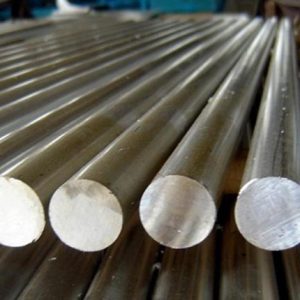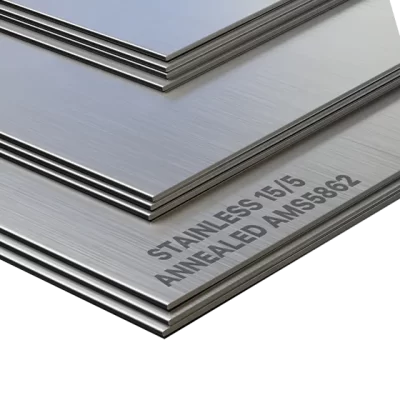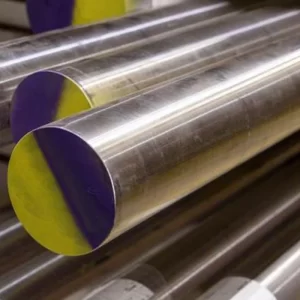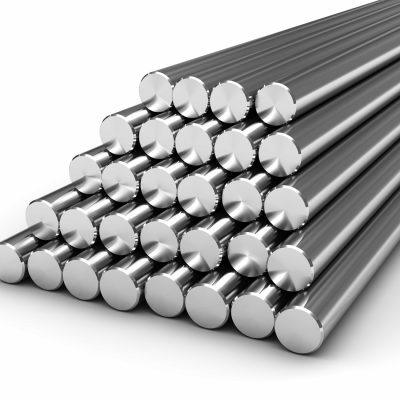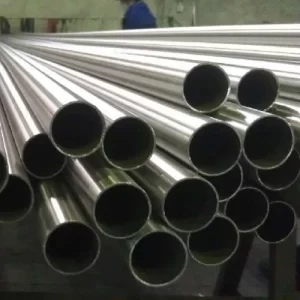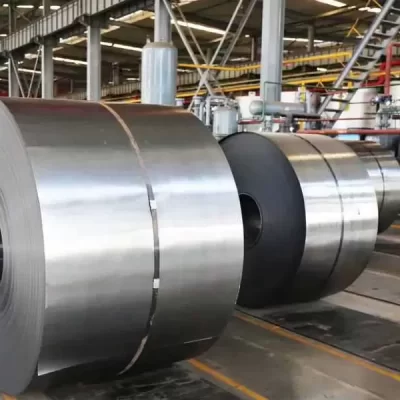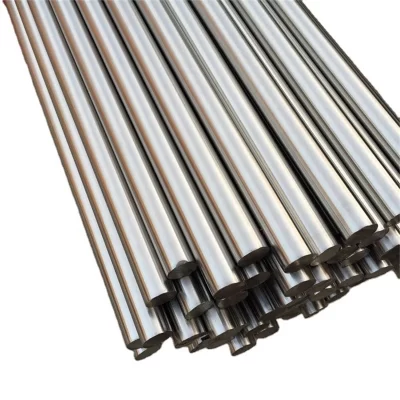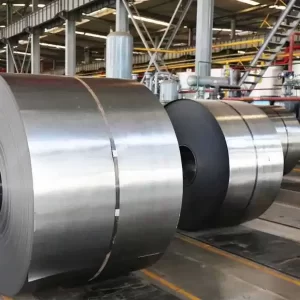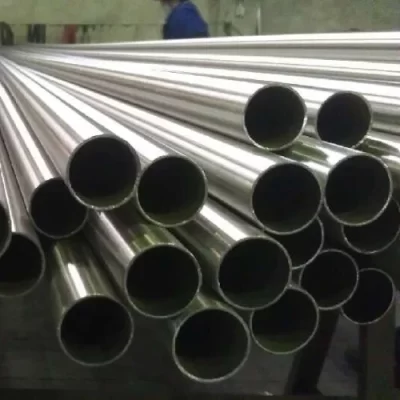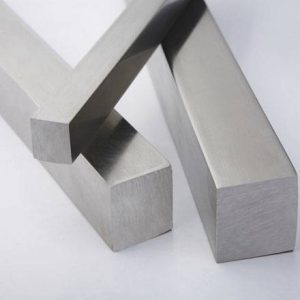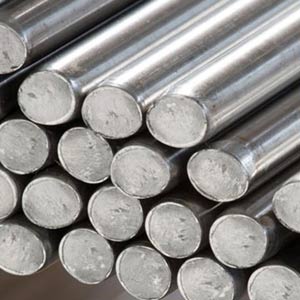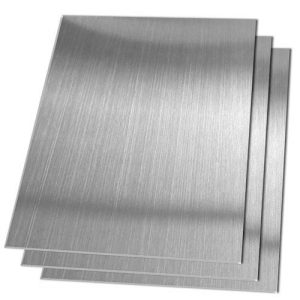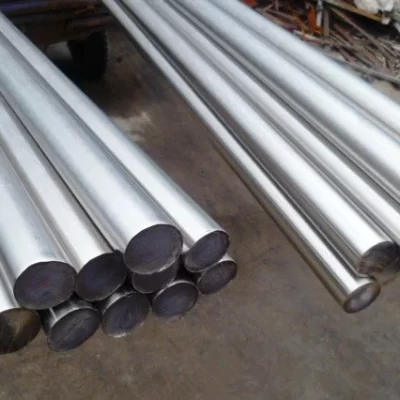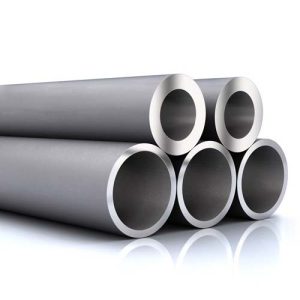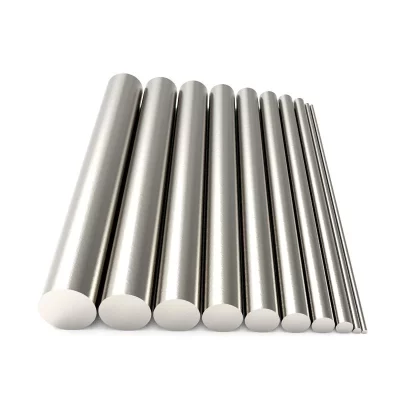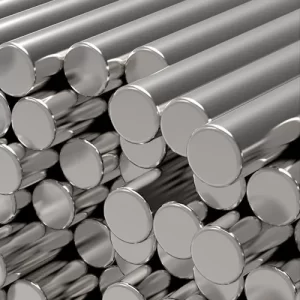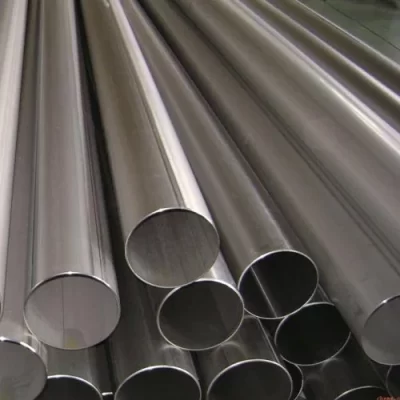Showing 1–9 of 10 results
-
Stainless Steel 15-5 ph
15-5 PH stainless steel is a martensitic precipitation-hardening stainless steel with approximately 15% Chromium and 5% Nickel. It has high strength, high hardness, and excellent corrosion resistance. Strength can be further increased by a single low temperature heat treatment. Compared to 17-4 PH, it offers better transverse toughness and ductility; better mechanical properties in larger cross-sections, and better forgeability. It is readily weldable. It can be machined in any of the several Thermal Conditions available to this grade.
-
Stainless Steel 17-4 ph
AISI 660 / UNS S17400 / 17-4 PH
Stainless Steel Bars, Stainless Steel 44017-4 stainless steel bar, also known as UNS S17400, 17-4 PH and Grade 630, is one of the original precipitation hardened grades developed in the 50’s. Primarily comprised of 17% chromium, 4% nickel, 4% copper, with the balance being iron. There are also trace amounts of manganese, phosphorus, sulfur, silicon, columbium (or niobium) and tantalum. Stainless Steel 17-4 PH delivers an excellent combination of oxidation and corrosion resistance. Other characteristics include high strength, toughness, and quality mechanical properties at temperatures up to 600° F. Engineers and designers frequently choose Stainless Steel 17-4 PH due to its high strength and superior corrosion resistance when compared to many other stainless steels.
-
Stainless Steel 410
410/420 Stainless Steel Bar UNS S41000/UNS S42000
440b Stainless SteelStainless steel 410/420, also known as UNS S41000 and UNS S42000, is considered a basic martensitic stainless steel. Comprised of 11.5% to 13.5% chromium and iron, along with trace amounts of other elements including carbon, manganese, phosphorus, silicon, and sulfur. After heat treatment, Stainless Steel 410 exhibits high mechanical properties, it is magnetic in both hardened and annealed conditions. Upon specification, Stainless Steel 410 can be delivered in a hardened, yet still machinable state for uses where moderate corrosion resistance and high strength are required. Stainless Steel 410 reaches maximum corrosion resistance when hardened, tempered and polished. It can be welded using most common welding methods, hot worked between 2000° F and 2200° F, as well as, cold formed and annealed. Because of all of these traits it is widely considered the “general purpose grade” of stainless steel.
-
Stainless Steel 416
Grade 416 steel is a free-machining stainless steel with a machinability of 85%, highest of all stainless steels. With most of the free-machining stainless steels, the machinability can be improved by adding sulphur, which leads to the formation of manganese sulphide inclusions. Addition of sulphur also reduces the formability, weldability and corrosion resistance of 416 steels to below that of grade 410. Because of their high machinability and low cost, grade 416 steels are available in highly tempered, hardened or unhardened forms.
-
Stainless Steel 420
410/420 Stainless Steel Bar UNS S41000/UNS S42000
440b Stainless SteelStainless steel 410/420, also known as UNS S41000 and UNS S42000, is considered a basic martensitic stainless steel. Comprised of 11.5% to 13.5% chromium and iron, along with trace amounts of other elements including carbon, manganese, phosphorus, silicon, and sulfur. After heat treatment, Stainless Steel 410 exhibits high mechanical properties, it is magnetic in both hardened and annealed conditions. Upon specification, Stainless Steel 410 can be delivered in a hardened, yet still machinable state for uses where moderate corrosion resistance and high strength are required. Stainless Steel 410 reaches maximum corrosion resistance when hardened, tempered and polished. It can be welded using most common welding methods, hot worked between 2000° F and 2200° F, as well as, cold formed and annealed. Because of all of these traits it is widely considered the “general purpose grade” of stainless steel.
-
Stainless Steel 422
AISI 422 / S42200 / 1.4935 SS 422 Stainless Steel Bar
Stainless Steel Bars, Steel ManufacturersAlloy 422 is a hardenable stainless steel designed for use at temperatures of up to 1200ºF (649ºC). Alloy 422 has good resistance to scaling and oxidation. Through heat treatment, high mechanical properties can be developed. Alloy 422 is used in applications such as compressors or steam turbines and also in aircraft parts, valves, high temperature bolting etc.
-
Stainless Steel 430
Stainless steel grade 430 is a non-hardenable steel containing straight chromium, and belongs to the ferritic group of steels. This steel is known for its good corrosion resistance and formability, coupled with practical mechanical properties. It can be used in certain chemical applications due to its resistance to nitric acid.
-
Stainless Steel 431
AISI 431 / S43100/ 1.4057 SS 431 STAINLESS STEEL BARS
440 Stainless Steel, Stainless Steel 440b Round Bar431 is a high chromium-low nickel high hardenability Martensitic stainless steel with high strength and good corrosion resistance, as generally supplied hardened and tempered in the tensile range 850 – 1000 Mpa (condition T) Brinell range 248 – 302. Characterised by very good corrosion resistance in general atmospheric corrosive environments, good resistance to mild marine and industrial atmospheres, resistant to many organic materials, nitric acid and petroleum products coupled with high tensile and high yield strength plus excellent toughness in the hardened and tempered condition.
431 due to its excellent hardenability is capable of being through hardened up to Rc44, depending upon carbon content and section size. Small sections can be air cooled and larger sections oil quenched for maximum through hardness. Pre hardened and tempered 431 will also respond readily to nitriding achieving a typical surface hardness of over Rc65. The nitriding process however reduces the corrosion resistance and is therefore not generally recommended except for critical applications where the benefit outweighs all other considerations. Used extensively for parts requiring a combination of high tensile strength, good toughness and good corrosion resistant properties.
-
Stainless Steel 446
Stainless steels are known as high-alloy steels. They have excellent corrosion resistance in comparison with other steels as they contain more chromium.
Based on their crystalline structure, stainless steels are divided into three groups, namely, martensitic, austenitic and ferritic steels. A combination of martensitic and ferritic steels forms a fourth group known as precipitation-hardened steels.

